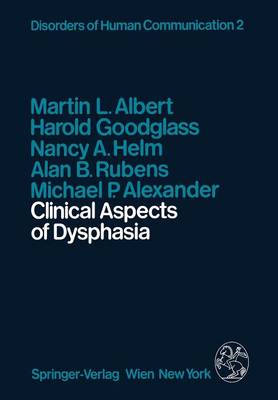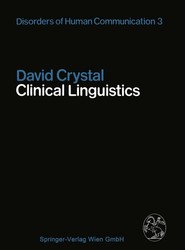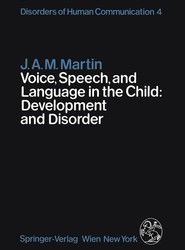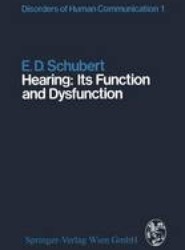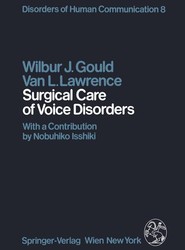(To see other currencies, click on price)
MORE ABOUT THIS BOOK
Main description:
This volume is one in a series of monographs being issued under the general title of "Disorders of Human Communication". Each monograph deals in detail with a particular aspect of vocal communication and its disorders, and is written by internationally distinguished experts. Therefore, the series will provide an authoritative source of up-to-date scientific and clinical informa tion relating to the whole field of normal and abnormal speech communication, and as such will succeed the earlier monumental work "Handbuch der Stimm und Sprachheilkunde" by R. Luchsinger and G. E. Arnold (last issued in 1970). This series will prove invaluable for clinicians, teachers and research workers in phoniatrics and logopaedics, phonetics and linguistics, speech pathology, otolaryngology, neurology and neurosurgery, psychology and psychiatry, paediatrics and audiology. Several of the monographs will also be useful to voice and singing teachers, and to their pupils. G. E. Arnold, Jackson, Miss. F. Winckel, Berlin B. D. Wyke, London Preface Neurologists, neuropsychologists, speech pathologists and other clinicians who care for dysphasic patients have often complained that available books on dysphasia tend to be parochially theoretical, and insufficiently directed towards clinical reality. These books provide the categories, labels, and theoretical speculations of one school or another; but dysphasic patients as often as not do not fit neatly into a specific theoretical category. Clinical patterns of dysphasic syndromes of most patients with dysphasia rarely conform fully to the pictures painted in the textbooks.
Contents:
I. Examination of the Dysphasic Patient.- A. General Clinical Considerations.- B. Brief, Clinical (Bedside) Examination for Dysphasia.- C. Clinical Guide to Classification of Dysphasic Syndromes.- D. Formal Language Evaluation.- 1. Five Aspects of Assessment in Dysphasia.- Dysphasia Testing as an Inventory of Language Input and Output Modalities.- Linguistic Aspects of Dysphasia Testing.- Diagnostic Aims of Dysphasia Testing.- The Dysphasia Examination as a Case Study.- Quantitative Aspects of Assessment.- 2. Non-Language Aspects of Assessment.- Non-Specific Indicators.- Specific (Localizing) Non-Language Deficits.- 3. Assessment and Therapy.- 4. The Formal Dysphasia Examination.- a) The Free Conversational Sample.- b) The Evaluation of Auditory Comprehension.- c) The Assessment of Productive Speech.- d) Repetition.- e) Tests of Word Retrieval.- f) Reading.- g) Examination of Writing Ability.- 5. Testing for Dyspraxia.- 6. Beyond the Formal Examination.- II. Clinical Features of Dysphasic Syndromes.- A. Introduction.- B. Neuroanatomical and Neurophysiological Considerations.- C. Dysphasia with Repetition Disturbance.- 1. Broca's Dysphasia.- 2. Wernicke's Dysphasia.- 3. Conduction Dysphasia.- 4. Global Dysphasia.- 5. Aphemia.- 6. Pure Word Deafness.- D. Dysphasia without Repetition Disturbance.- 1. Transcortical Dysphasias.- 2. Transcortical Motor Dysphasia.- 3. Transcortical Sensory Dysphasia.- 4. Mixed Transcortical Dysphasia.- 5. Anomic Dysphasia.- 6. Dysphasia from Left Subcortical Lesions.- E. Disturbances of Reading and Writing.- 1. Dyslexias.- Disorders of Written Language Associated with Dysphasia: Dysphasic Dyslexia.- Dyslexia with Dysgraphia in the Absence of Dysphasia.- Dyslexia without Dysgraphia (Pure Dyslexia, Agnostic Dyslexia).- 2. Dysgraphias.- F. Special Clinical Forms of Dysphasia.- 1. Crossed Dysphasia.- 2. Dysphasia in Polyglots.- 3. Dysphasia in Left-Handers.- 4. Dysphasia in Deaf-Mutes.- 5. Dysphasia in Dementia.- III. Therapy of Dysphasia in Adults.- A. Is Dysphasia Rehabilitation Effective?.- 1. Introduction.- 2. Measuring Response to Treatment.- 3. Studies of Dysphasia Treatment.- 4. Conclusion.- B. What Approaches to Dysphasia Rehabilitation Are Feit to Be Most Effective?.- 1. Introduction.- 2. Treatment of Global Dysphasia.- Specific Approaches to Global Dysphasia.- 3. Treatment of Non-Fluent Dysphasia.- Specific Approaches to Non-Fluent Dysphasia.- A Case Report of Treatment with Melodie Intonation Therapy.- 4. Treatment of Agrammatism.- 5. Treatment of Anomia.- 6. Treatment of Comprehension Disorders.- C. General Considerations for Dysphasia Rehabilitation.- 1. Group versus Individual Language Therapy.- 2. The Influence of Fatigue and Perseveration on Dysphasia Rehabilitation.- 3. The Influence of Reinforcement and Feedback on Dysphasia Rehabilitation.- 4. The Influence of Repetition on Dysphasia Rehabilitation.- 5. The Influence of Sensory Input Variables on Dysphasia Rehabilitation.- 6. Conclusion.- References.
PRODUCT DETAILS
Publisher: Springer (Springer Verlag GmbH)
Publication date: January, 2012
Pages: 194
Weight: 369g
Availability: Available
Subcategories: Neuroscience
From the same series

